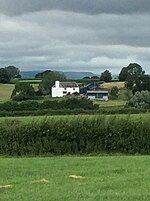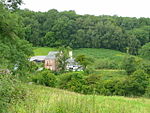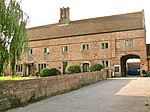St Cadoc's Church, Penrhos
15th-century church buildings in WalesChurch in Wales church buildingsGrade II* listed churches in MonmouthshireHistory of Monmouthshire

The Church of St Cadoc, Penrhos, Monmouthshire is a parish church with its origins in the 15th century. Restored in the 19th century, it remains an active parish church, and has recently undergone major renovation. The church is a Grade II* listed building.
Excerpt from the Wikipedia article St Cadoc's Church, Penrhos (License: CC BY-SA 3.0, Authors, Images).St Cadoc's Church, Penrhos
Pen y Parc Road,
Geographical coordinates (GPS) Address Nearby Places Show on map
Geographical coordinates (GPS)
| Latitude | Longitude |
|---|---|
| N 51.8013 ° | E -2.8483 ° |
Address
Pen y Parc Road
NP15 2BY , Mitchel Troy
Wales, United Kingdom
Open on Google Maps











